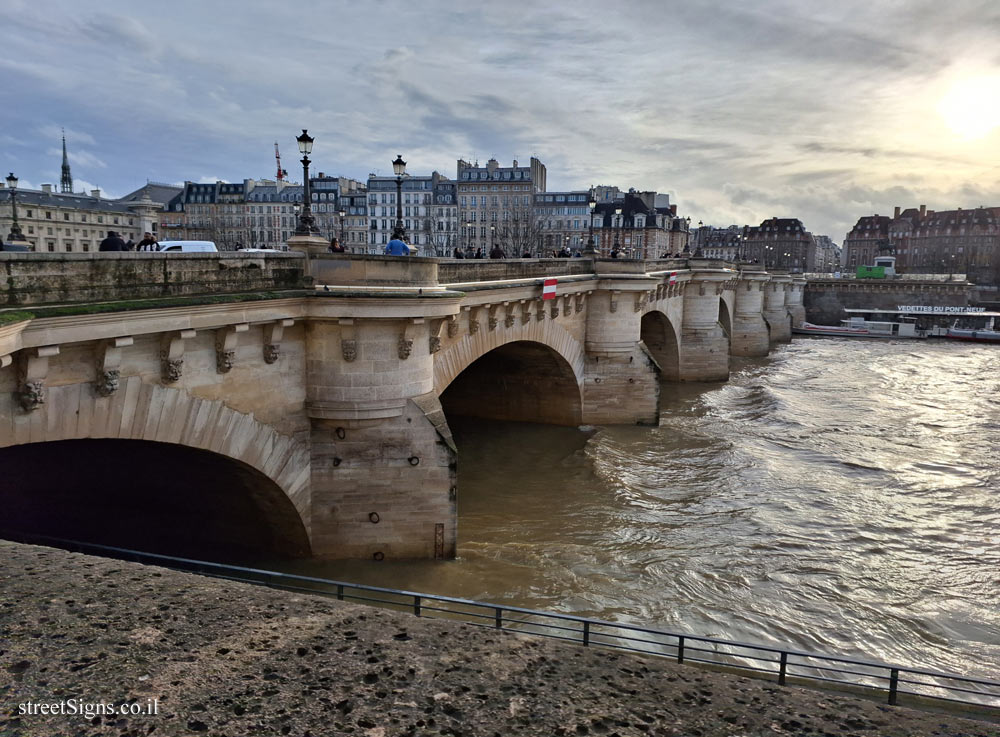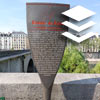One of the series of signs describing historical places in Paris. The signs were placed starting in 1992 and are also called sucettes Starck (Starck’s Lollipops) after Philippe Starck who designed them.
The sign describes the "New Bridge" (Pont Neuf) which, despite its name, is the oldest bridge still standing in Paris.
The bridge was photographed that day
 Click for a larger image
Click for a larger image as well as several months earlier
 Click for a larger image
Click for a larger image In the picture from which the sign was taken, you can see the location of the sign and the bridge itself
 Click for a larger image
Click for a larger image More details about the bridge on the sign in the "Seine bridges in Paris" series
 Click for sign's details Translation of the text on the sign
Click for sign's details Translation of the text on the sign:
[An illustration of a ship, symbolizing the symbol of Paris]
History of Paris Pont Neuf On May 31, 1578, Henri III laid the first stone of the Pont-Neuf. Interrupted by the civil war, work resumed in 1599 to be completed on July 8, 1606. Designed by Baptiste Androuet du Cerceau and Pierre des Illes, it is the largest bridge in Paris, 278 meters long for its twelve arches; it is also the first to no longer have houses. In 1608, on the second arch from the right bank, a lifting pump was built which supplied water to the Louvre and the Tuileries. Decorated on its façade with a bronze bas-relief representing Christ and the Samaritan woman, it was destroyed in 1813. In 1635, Louis XIll had an equestrian statue of his father erected, facing Place Dauphine, destroyed in 1792, and replaced in 1818 by a new statue of Henry IV by Lemot. In a city where public roads were narrow and open spaces rare, this wide bridge was a godsend for the juggernauts and charlatans who settled there as soon as it opened. The first was Tabarin, whose troupe played pranks in the open air, followed by barkers of all kinds, sellers of Orvietan balm, tooth pullers and other itinerant traders.

 Click for a larger image
Click for a larger image  Click for a larger image
Click for a larger image  Click for a larger image
Click for a larger image  Click for sign's details
Click for sign's details  Click for all signs belonging to The History of Paris (Starck's Lollipops)
Click for all signs belonging to The History of Paris (Starck's Lollipops)
 280 Meter |
280 Meter |  330 Meter |
330 Meter |  354 Meter |
354 Meter |  450 Meter |
450 Meter |  482 Meter
482 Meter